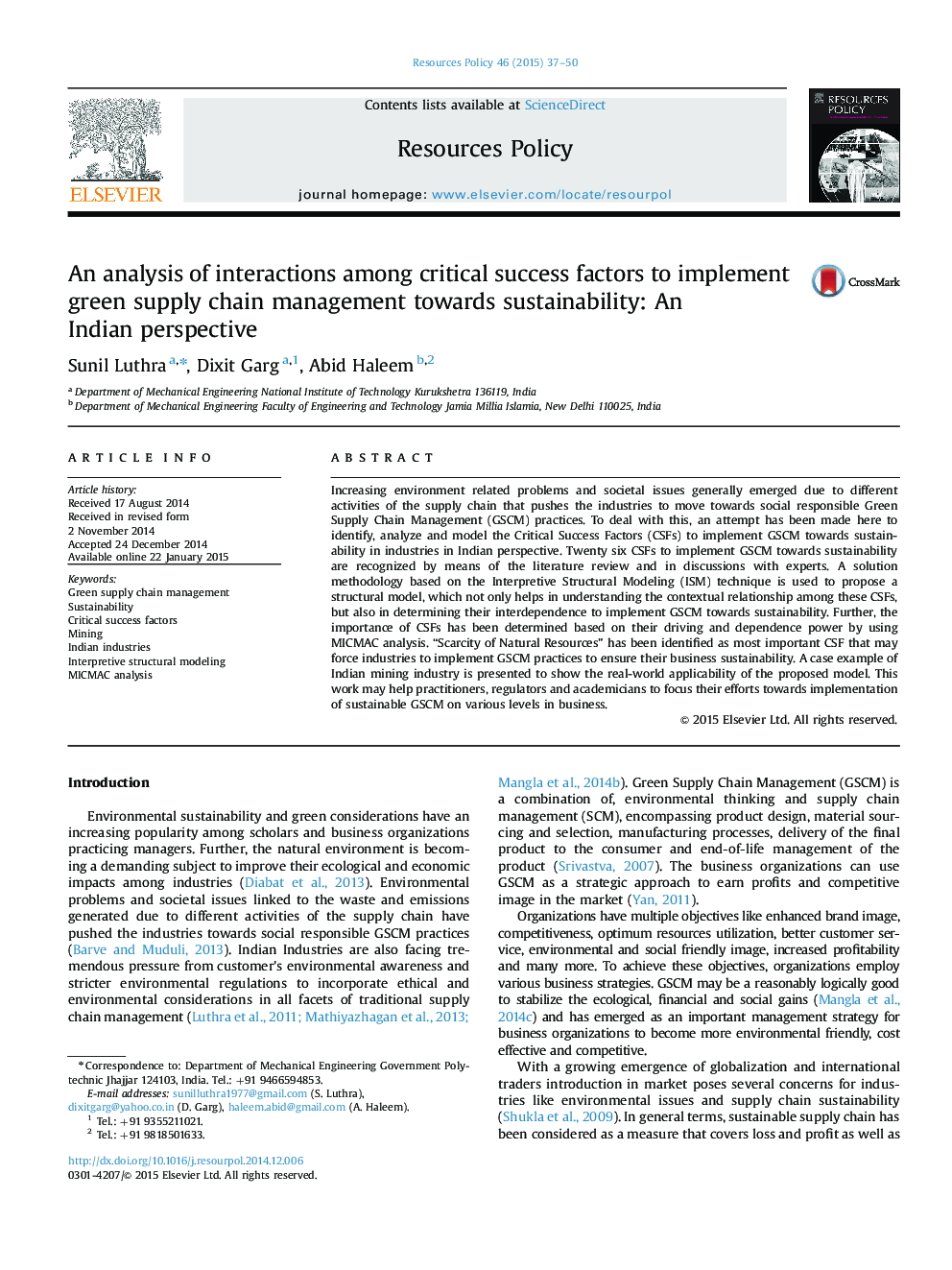| کد مقاله | کد نشریه | سال انتشار | مقاله انگلیسی | نسخه تمام متن |
|---|---|---|---|---|
| 986123 | 934763 | 2015 | 14 صفحه PDF | دانلود رایگان |
• Identified 26 critical success factors (CSFs) to implement GSCM towards sustainability from Indian industries perspectives.
• Interpretive structural modeling (ISM) methodology is used to analyze the contextual relationship among CSFs.
• “Scarcity of Natural Resources” is identified as most important CSF to implement GSCM practices towards sustainability.
• MICMAC analysis is done to classify CSFs on the basis of their driving and dependence power.
• A case example of Indian mining industry is presented to show the proposed model real-life applicability.
Increasing environment related problems and societal issues generally emerged due to different activities of the supply chain that pushes the industries to move towards social responsible Green Supply Chain Management (GSCM) practices. To deal with this, an attempt has been made here to identify, analyze and model the Critical Success Factors (CSFs) to implement GSCM towards sustainability in industries in Indian perspective. Twenty six CSFs to implement GSCM towards sustainability are recognized by means of the literature review and in discussions with experts. A solution methodology based on the Interpretive Structural Modeling (ISM) technique is used to propose a structural model, which not only helps in understanding the contextual relationship among these CSFs, but also in determining their interdependence to implement GSCM towards sustainability. Further, the importance of CSFs has been determined based on their driving and dependence power by using MICMAC analysis. “Scarcity of Natural Resources” has been identified as most important CSF that may force industries to implement GSCM practices to ensure their business sustainability. A case example of Indian mining industry is presented to show the real-world applicability of the proposed model. This work may help practitioners, regulators and academicians to focus their efforts towards implementation of sustainable GSCM on various levels in business.
Journal: Resources Policy - Volume 46, Part 1, December 2015, Pages 37–50
